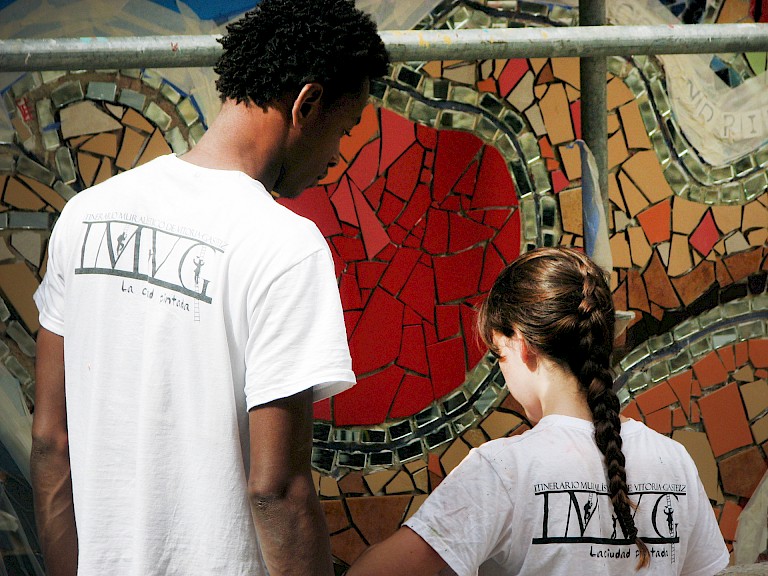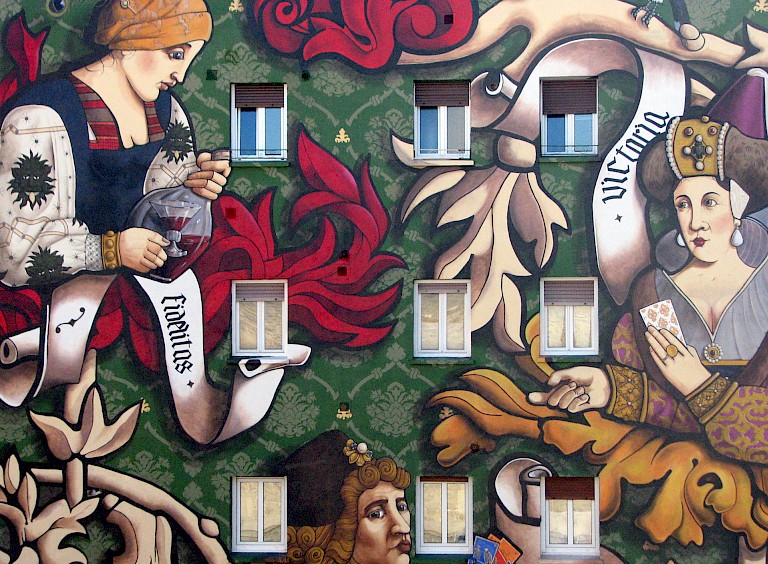



For the Werckmeisters, a vital component of IMVG is its participatory model. In their words, “We are designing a new way for citizens to interact with their city through art and placemaking.” Each mural is produced over six weeks, with an artistic team facilitating and coordinating negotiations between participants and the final execution of the collectively designed mural. One of the artist-facilitators observes, “The biggest challenge is the coordination.” This is because IMVG has a relatively open framework that invites members of the public with very different aesthetic sensibilities and social backgrounds to participate. Within this framework, participants are compelled to invent ways of co-existing with their differences while actively achieving a shared vision through a mural.
The artists characterize the project as a grassroots or bottom-up social intervention. However, unlike some interventions such as graffiti, IMVG murals are produced with the knowledge and consent of building owners, policy makers, and urban planners. What is remarkable is that these partners commit to the murals without knowing in advance what designs will be, a significant measure of the trust that IMVG has gained in the community. As the Werckmeisters remark, “policy makers and artists must be prepared to forego total control so that citizens can experience the power and responsibility of leaving a permanent mark on their own urban landscape.”
As a project that aims to build social cohesion and nurture a sense of greater collective investment in the beautification and revitalization of Vitoria-Gasteiz’s Medieval Quarter, it is critical that individual participants have the experience of leaving a permanent mark in their neighborhood. Video interviews with artists and participants provide evidence that this was achieved in a number of the mural projects. These public acts of art-making are a means for groups of people to inhabit a place, to stake collective claims to various publics, and to make a neighborhood a home. They provide us with an especially successful example of creative placemaking.
Another compelling component of IMVG is its creation of so-called “Brush Brigades,” a government-funded youth employment program that enables individuals, mainly from trade schools and fine arts programs, to earn a part-time income while engaged in the mural creation. Notably, it is a group of artists in this case who provide an innovative framework for employment and experience in the creative sector. With the successful completion of several murals over six years, and an extension of the program into another neighborhood in 2013, it’s apparent that IMVG is proving to be a sustainable artistic program achieving several of the artists’ goals of social transformation.
All copyright belongs to Shanghai Academy of Fine Arts, Shanghai University.



